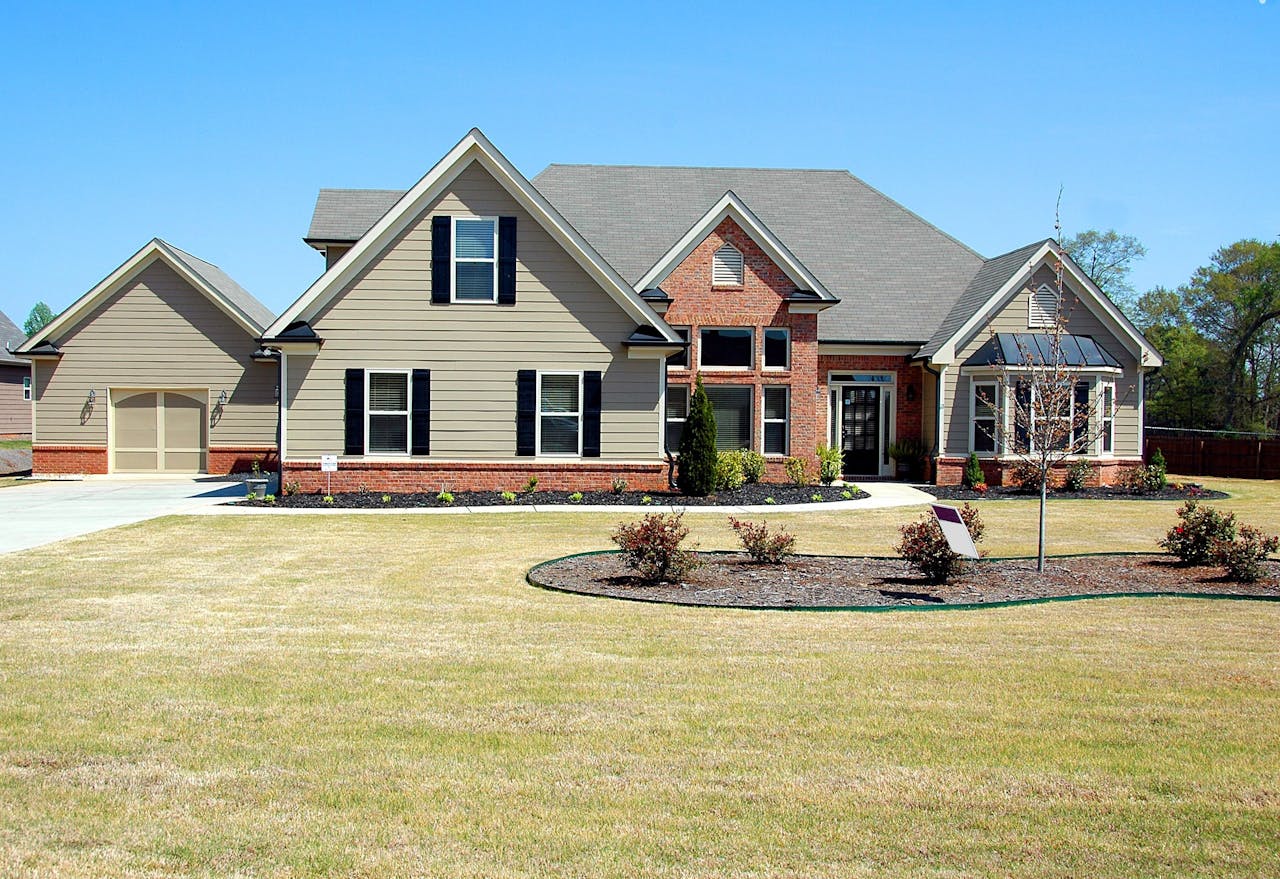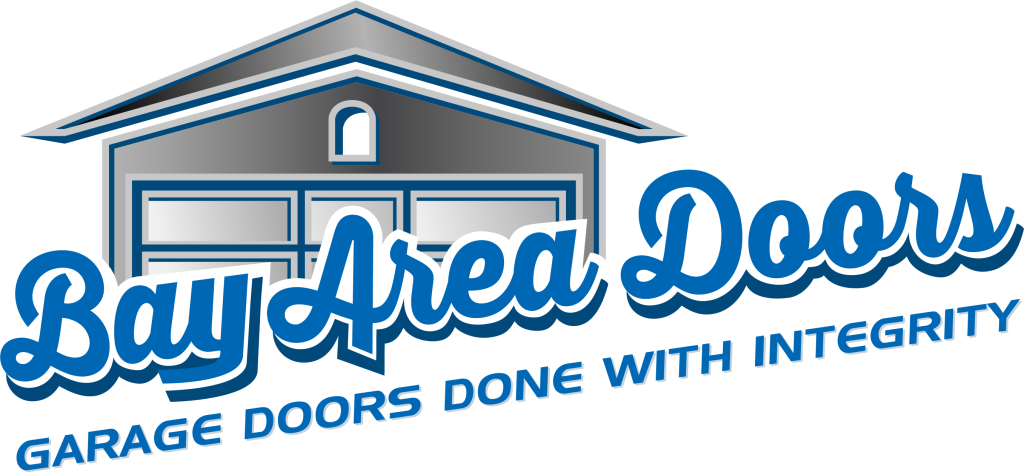Garage door springs typically last 7-12 years or 10,000 cycles, depending on your garage door usage. If you open and close your door a few times a day, you may need to replace your springs more quickly. Weather, spring quality, and maintenance habits can influence the duration of your springs’ lifespan. When springs begin to wear, you might notice small gaps or hear loud snaps when in use. Understanding the typical life span helps you anticipate fixes and maintain your garage’s safety. In the following sections, you’ll discover additional signs of wear and ways to make your springs last.
Key Takeaways
- Do you know when to replace garage door springs?
- Opt for the best springs and have them properly matched to your door’s weight for increased longevity and secure function.
- Do maintenance, such as lubrication and inspections, to avoid rust, balance problems, and early wear.
- Identify signs of failing springs, like strange noises, crooked door movement, or door difficulty.
- Think professional tune-ups and go to the pros for installs and fixes, to steer clear of botched setups and surprise charges.
- Put safety first—warn your family about spring hazards and conduct timely inspections to avert potential harm or property damage.

What Determines Spring Lifespan?
The lifespan of garage door springs is influenced by factors beyond just age, such as usage frequency, spring quality, door weight, and climate. Regular maintenance habits play a crucial role in scheduling garage door spring replacement and preventing unexpected failures.
1. Cycle Count
Most springs are rated for a certain cycle life. Normal springs last somewhere between 5,000 & 10,000 cycles, which translates to approximately 8.5 years if you open your door 3 times a day. High-cycle springs, which are crafted for as many as 50,000 cycles, can last 22 years or more with maintenance.
Heavy usage reduces this span. If your family opens the garage door five times a day, that comes out to nearly 1,825 cycles a year. At that pace, even premium springs might make it just seven to ten years. By logging daily cycles, you can estimate when to schedule a replacement.
2. Spring Quality
Premium springs, particularly those crafted from high-carbon steel or oil-tempered metal, outlast their counterparts and wear more effectively than lower-quality alternatives. Certain brands provide warranties, so you get additional peace of mind if a spring dies prematurely.
Cheap springs could snap before that and cost you more in repairs. Just a quick scan of reviews or a chat with local experts can help you identify brands with a stronger history for longevity.
3. Door Weight
Your garage door’s weight impacts the strain your springs endure. Heavier doors require stronger springs, and the wrong ones can cause unbalanced motion, additional strain, and premature failure. Always weigh your door and consult a professional for the proper spring type.
If springs are mismatched, you might observe uneven wear, noisy performance, or the door might have a hard time remaining open. These signs indicate it’s time to test your springs for load capacity.
4. Climate Impact
Extreme weather can significantly influence the durability of garage door springs, as high humidity causes rust and weakens the metal, while cold snaps make springs brittle and prone to breakage. Utilizing weather-resistant springs and ensuring proper maintenance with lubrication can help slow down corrosion.
5. Maintenance Routine
Routine inspections can help detect issues like metal fatigue, cracks, or rust in garage door springs, ensuring proper maintenance and extending their lifespan.
Torsion VS. Extension Springs
Garage door springs, specifically torsion and extension springs, perform the heavy lifting every time you raise or lower your door. Each type has unique mounting locations, strengths, and maintenance requirements. Your decision on the right garage door spring replacement impacts not only the functionality of your door but also the longevity and security of your system.
The Workhorse
Torsion springs are positioned above your garage door, coiled on a shaft. They twist to raise the door, delivering consistent, balanced power.
They can effortlessly manage heavier doors and are the most common modern choice. If your garage door is large or constructed from heavy material, torsion springs provide you with the strength you require. They last longer — 15,000-20,000 cycles — beating extension springs as well. With simple math, if you operate your door two times per day, that’s as much as 14 years from a single set of torsion springs.
Health is key. A properly-tuned torsion spring maintains tension equilibrium, halts uneven wear, and assists in avoiding unexpected failure. Periodically inspect the springs for rust, gaps, or deformity. Lubricate once every couple of months to reduce friction and keep them squeaking (and rust patches) at bay. Because torsion springs remain stationary when they break, they reduce the danger of damage or injury.
The Stretchers
Extension springs stretch along the sides of your garage door tracks. As the door moves, these springs extend and spring back to assist with lifting.
This style is less expensive initially and suits lighter doors. They typically provide up to 10,000 cycles. For lighter garage doors or budgets, extension springs do the trick, but not as long. If you open and close your door frequently, look into high-cycle extension springs. They last longer and provide more bang for your buck.
Check extension springs frequently for stretching, gaps, or fraying. They can snap abruptly, occasionally projecting fragments. For safety, always use safety cables with extension springs to protect people and property.
Which Lasts Longer?
Torsion springs tend to outlast extension springs. For busy households, high-cycle torsion springs are worth the additional cost. They’re more expensive initially, but fewer replacements mean less hassle long term.
If you use your door less, extension springs may be logical. Remember, replacements add up. Here’s a quick look:
Spring Type | Typical Lifespan (Cycles) |
Torsion Springs | 15,000–20,000 |
Extension Springs | Up to 10,000 |
Choosing The Right Fit
Keep in mind, as always, your garage door’s weight, frequency of use, and budget.
Torsion springs are best for heavy or large doors, and extension springs can be utilized for lighter doors. Routine maintenance—such as inspecting springs and lubricating—assists both kinds in enduring.
Identify Failing Springs
Garage door springs require regular maintenance and inspection. Recognizing these indicators can save you from unexpected failures, ensure smooth operation, and even avert injury. Key warning signs include weird noises, gaps, and cumbersome lifting.
Unusual Sounds
Odd noises when you’re using them can be among the first things you sense. Popping noises typically indicate metal fatigue or a broken garage door spring, while loud squeaks could signify that a spring needs oil or is on the verge of breaking, highlighting the importance of regular maintenance.
- Squeaking: Usually means a lack of oil or metal wear
- Popping: Often a sign of a cracked or broken spring
- Grinding: Can show rust or rough spots on the spring
- Banging: May signal that a spring has snapped suddenly
The Gap Test
The gap test is an easy method to identify garage door spring issues. Open the door and examine the gap between it and its frame. Gaps at the top or sides can indicate that the spring tension is out or the garage door spring has worn out. Use a level to determine if the door is sitting flat. If you see a gap between the coils of a torsion spring or cracks on the spring’s surface, you’re just begging for trouble. Take notes to present to a precision garage door service professional later.
Crooked Door
One of the most common signs that your garage door springs are on their last leg is a door that tilts or moves at an angle while in use. Soft or uneven springs, such as standard torsion springs, have one side going up too soon or too late. If you notice uneven spaces along the sides of the door, move fast to prevent more expensive damage to the tracks or other components. If your fixes don’t work, seek assistance from a garage door professional.
Heavy Lifting
If the door feels too heavy or you require much more force to open it, the garage door springs may be to blame. Springs do most of the lifting, so if they are worn out, you’ll know. This is especially true if you use your garage door frequently or if the springs are 7-10 years old. Heavy doors can also lead to garage door issues, so don’t overlook this indicator.
Sudden Drop
This quick drop, or slam shut, is the first indicator of a garage door spring issue or broken spring. Such hazards require immediate garage door spring replacement to ensure safety. Any abrupt alteration in the door’s motion can endanger you or others, so if you notice these drops, call a precision garage door service professional for a full check.
Why Springs Ultimately Break
Garage door springs perform a straightforward task but endure a huge amount of strain every day. Each time you open and close your garage door, the springs extend and retract, tensioning them. Over time, this strain wears the metal down, leading to potential garage door issues. Most garage door springs are designed to last roughly 10,000 cycles — approximately 3-5 years for an average user. Factors such as how frequently you open your door, your local climate, or whether you maintain proper maintenance can influence their lifespan. Even the finest springs ultimately break; knowing why helps you identify issues early and remain safe.
Metal Fatigue
Metal fatigue is the primary culprit behind your garage door springs breaking. Every time the door moves, the spring extends, then relaxes, then extends thousands of times. Over years of daily use, the metal eventually weakens. You may see tiny cracks, distortion, or spaces in the coils prior to a spring breaking. Springs eventually lose tension, and the door can feel heavier or cease to work smoothly.
Inspect your springs on a regular basis and be on the lookout for these warning signs. If you notice cracks or kinks, replace springs immediately. Waiting too long can mean a spring break while you’re operating the door, which is hazardous. Springs that are overly stressed or stretched can fail in well under 10,000 cycles, particularly if the door is heavy or used more than average.
Rust And Corrosion
Rust and corrosion compromised springs, causing them to break prematurely. Humid weather, salty air, or bad storage can allow moisture to accumulate on the metal. Rust corrodes the spring as well, increasing the chances it will break, even if it’s not that old.
So, a nice preventative against rust would be a light protective spray or clean, dry springs. In wet climates, inspect springs regularly for rusty spots or rough areas. If you notice rust, don’t delay—scrub the spring and apply a protective coating to prevent further deterioration.
Improper Installation
When garage door springs aren’t installed correctly, they break sooner. If the springs are unbalanced or not matched to your door, one side can have more weight. It is this uneven strain that leads to premature failure.
Choose carefully, Springs ultimately break. If you hear weird noises or your door swings unevenly, inspect the springs. A poorly installed spring will rattle the door or cause it to stick, a warning to repair the configuration before it deteriorates further.
Monitoring And Maintenance
Watch for warnings such as loose, rust, or strange noises.
Check springs two times a year.
Fix small problems right away to avoid sudden breaks.

The Hidden Costs Of Failure
Spring failures do more than just halt your garage door; they can lead to significant garage door spring replacement costs and even jeopardize your security. Repair bills and damage to other areas can deplete your finances, so being aware of these expenses helps you avoid unpleasant surprises.
Emergency Fees
Garage door springs tend to break at the most inconvenient times—at night or on weekends. If you require immediate assistance, you’ll pay extra. Emergency call-out rates exceed normal ones. You might pony up additional funds for parts if they’re not available or if the entire door is jammed open or closed.
If you account for these potential costs, you’re less likely to be surprised. Preventive maintenance can help as well. It’s far less expensive to identify a worn spring before it splits than it is to race around for midnight repairs.
- Emergency call-out service: $140–$220
- After-hours labor fees: $40–$75 extra
- Immediate part replacement: $50–$90
- Temporary door securing: $30–$60
Collateral Damage
A broken garage door spring may drag others down, causing the opener to choke and potentially burn out, while tracks warp or wires break. For instance, if the opener is damaged, a new one can range from $600 to $1500. Additionally, garage door spring replacement costs can add up, as tracks or cables might require repair, resulting in an extra $98 to $200. If the falling door snaps, you’re staring at a new install—frequently $1600+.
Check your entire spring system when a spring breaks. Overlooked damage can translate to more breakdowns and bigger bills down the road. Doors over 15 years old are particularly susceptible, as older components might not be compatible with new garage door springs.
Regular maintenance and inspections reduce the potential for these garage door issues. A little attention today can spare you big repair bills and migraines tomorrow.
Personal Safety
Garage door springs are in extreme tension, and if they fail, they can whip free and cause injury. Avoid attempting to open or close a door with a broken spring, and inform your family about the danger. Safety cables are crucial as they catch flying metal during a spring break. Regular maintenance by a precision garage door service professional is an easy way to protect your home.
Potential Costs And Damages
Item | Cost Range (USD) |
Cable replacement | $98–$120 |
Track repair/replacement | $147–$200 |
Garage door opener replacement | $600–$1500 |
New garage door installation | $1600–$2500+ |
Emergency repair fees | $140–$220+ |
How To Extend Spring Life
Garage door springs absorb an incredible amount of tension and daily usage, making regular maintenance essential for their longevity. By employing savvy habits and scheduling expert inspections, you can significantly extend the life cycle of your garage door system, regardless of location or the specific door type.
Regular Lubrication
Greasing your springs every few months with a garage door lubricant keeps friction low and helps prevent rust before it even begins. You should use an actual garage door product, not just any oil, because the wrong kind can trap dust or degrade in extreme weather.
Check springs out with the seasons—cold or humid weather can dry up or remit the oil. If you hear the springs squeak or appear dry, it’s time to extend that spring life! Others, however, put a calendar reminder or record their maintenance dates, which ensures lubrication occurs on schedule and nothing is forgotten.
Balance Checks
A balanced garage door means that the springs don’t have to work harder than they should! To test the balance, disconnect the opener and lift the door halfway; it should stay put. If it drops or rockets up, the springs may require a tension adjustment. Look for jerky movement as the door opens and closes—this can indicate an imbalance.
Attempting to fix springs by yourself is dangerous. If your door still doesn’t balance after small fixes or if you notice gaps or cracks, it’s safer to call a garage door expert who knows how to manage these high-tension components.
Professional Tune-ups
Seasonal professional tune-ups DO matter. A trained technician can detect cracks, uneven wear, or minor problems before they escalate into major, expensive repairs. Pros can verify if your springs are premium and well-installed, both of which contribute to their lifespan.
Most garage door companies have maintenance plans that take the guesswork out. Putting money into these tune-ups translates to fewer surprises, a smoother system, and less chance of your springs snapping when you least expect them.
Other Ways To Extend Spring Life
- Use the garage door less to lower spring cycles.
- Avoid exposing springs to direct sun, or excessive heat or cold.
- Opt for springs constructed with thicker wire or a higher cycle rating.
- Inspect for rust, cracks, or flaking often.
Conclusion
Garage door springs work hard every day. Most last 7-9 years, or approximately 10,000 cycles. Hot days, cold nights, or heavy use will wear them down faster. Indications such as noisy creaks, sluggish doors, or spaces in the coils indicate it’s time to inspect your springs. Repairing issues before they become big saves you money and protects your home. Basic stuff, such as an annual inspection and light oil in spring, goes a long way. You don’t have to wonder if things break. Consult a local professional for quick assistance and honest advice. Be safe, keep your door smooth & check your springs today. Your house will thank you for it.
Frequently Asked Questions
1. How Long Do Garage Door Springs Usually Last?
The majority of garage door springs, particularly standard torsion springs, have a lifespan of 7,000 to 10,000 cycles. For the average home, this translates to roughly 7-14 years, depending on daily garage door usage.
2. What Affects The Lifespan Of Garage Door Springs?
The primary determinants of garage door spring durability are the frequency you open and close your garage door, the quality of the springs, and regular maintenance to prevent issues.
3. What Is The Difference Between Torsion And Extension Springs?
Torsion springs, which are a type of garage door spring, sit over the door and last longer, typically 10,000 cycles or more, while extension springs, often used in garage door systems, are on the sides and their lifespan is usually shorter.
4. How Can I Tell If My Garage Door Springs Are Failing?
If your garage door feels heavy, opens unevenly, or is noisy, it may indicate a garage door issue. Gaps in the springs or the door refusing to stay open suggest that your garage door springs might need replacement.
5. Why Do Garage Door Springs Break?
Springs break due to metal fatigue from the constant opening and closing cycles. Years of tension and unwinding lead to fatigue, necessitating garage door spring replacement.
6. What Are The Risks Of A Broken Garage Door Spring?
A broken garage door spring can cause the door to drop suddenly or get stuck, leading to an unbalanced garage door. This situation is unsafe and will break your garage door system, requiring expensive garage door spring replacement costs.
7. How Can I Make My Garage Door Springs Last Longer?
Regular maintenance of your garage door springs is essential; spray them regularly and consult a precision garage door service professional for inspections to maximize the lifespan of your high-cycle springs.
Don’t Wait For A Breakdown — Get Ahead Of Spring Failure
If your garage door springs are over 7 years old—or if you’ve been using your door multiple times a day—it’s time to think about a spring checkup. Worn or unbalanced springs can suddenly snap, slamming your door shut and risking damage to your opener, track, or even your safety. Don’t get caught off guard by an emergency repair that could’ve been prevented. At Bay Area Doors, we specialize in professional garage door spring replacements and tune-ups that help you avoid costly surprises and keep your system running smoothly. If it’s been over 7 years, schedule a spring checkup to avoid sudden failures. Let our licensed, dependable pros assess your springs today and help you stay safe, save money, and protect your home. Contact us now.
Disclaimer:
The information provided in this article is for educational and informational purposes only. Garage door spring replacement involves high-tension components that can cause serious injury or property damage if handled improperly. Always use appropriate safety gear and tools, and follow the manufacturer’s instructions precisely. Bay Area Doors recommends consulting or hiring a licensed professional for any garage door spring repair or replacement. By using this information, you agree to assume all risks associated with DIY repairs and hold Bay Area Doors harmless from any liability or damages resulting from its use.


